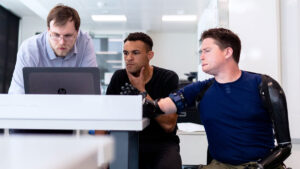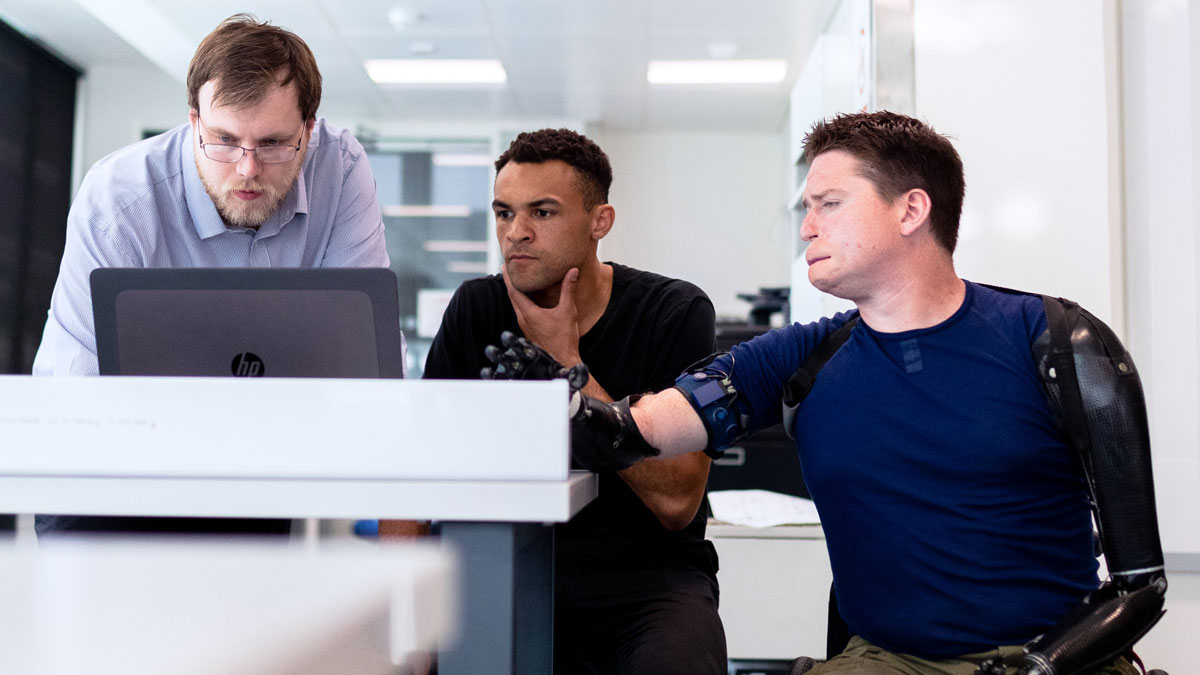Disclaimer: The information on our website is provided for general information purposes only. We make no representations or warranties of any kind, express or implied, about the completeness, accuracy, reliability, suitability or availability with respect to the website or the information contained on our website for any purpose. Any reliance on such information is therefore strictly at your own risk and we are not liable for any damages or losses arising out of or resulting from your reliance on any information contained on our website.
Automation is advancing in the 21st century and a robotics engineer is necessary to advance this trend. These engineers look at various ways to improve current robots or designs and test ways to advance the field of robotics. Various titles these engineers go by include factory automation engineers, research engineers, automation engineers, and autonomous vehicle engineers.
Watch a video to learn what a robotics engineer does:
How to Become a Robotics Engineer

A robotics engineer must be highly skilled in numerous disciplines to include mathematics, computer programming, mechanics, electronics, and knowledge about the make-up of various materials. You could call them the jack of all trades in the engineering community.
According to O*NET OnLine, about half of all robotic engineers reported holding a bachelor’s degree with almost 20% having earned a master’s degree. Not all employers may require a bachelor’s degree as almost 20% of robotics engineers had earned an associate’s degree. Though some colleges may offer a bachelor’s degree in robotics, not all do so many robotics engineers may earn their bachelor’s degree in another related field like electrical engineering, mechanical engineering, or computer science.
In addition to gaining a degree in a related field, it’s important to gain as much hands-on experience as possible. This means joining a robotics club in your area (or school if you are a student). Gaining experience by participating in robotics competitions is also a great way to gain the hands-on experience you’ll need. It’s also important to learn as much advanced math and physics as possible as both of these skills are needed in robotics.
Job Description of a Robotics Engineer
A robotics engineer will review and/or create design plans for a robot and determine how much it may cost to build. They may also identify the timeline of the building project as well. They must be skilled in math as they must make calculations during their work. Not only is math important, but so is computer programming as they may write software or program instructions for a robot to follow. Since a project may require a robot to be light, waterproof, fire-resistant, or virtual indestructible, these engineers must be knowledgable in various materials so they can design a functional robot that meets a project’s requirement.
Once a prototype is designed, a robotics engineer would then test the robot’s abilities and note any flaws. They would also ensure any code written for the robot to function is debugged. After testing is complete, they may go back to the drawing board and craft improvements based on these tests.
Free Teacher and Student Resources
Since there are a variety of ways to start your career in robotics, NASA interviewed many of their own robotics engineers to ask them how they got started. Check out NASA’s Robotics Career Corner webpage (link opens in a new tab) to check out these interviews. BEST Robotics (Boasting Engineering Science and Technology) is a robotics competition (link opens in a new tab) for middle and high school students that takes place each fall. Free Courses: You can also take free robotic’s courses on EdX (link opens in a new tab) on a variety of robotics topics. University’s that offer these free courses also have an option to pay a small fee to gain a certificate of completion as well.
Career Interview Video Transcript
My name is Roger Rovekamp. I work at the NASA Johnson Space Center as a robotics engineer. I’m certainly working in an emerging field called wearable robotics. People are becoming more comfortable with the man and machine becoming closer together. In the past there may have been hesitation or the technology wasn’t there, it wasn’t compact enough. But now we’ve reached a tipping point of sorts where all this technology is coming together at the right time. We’re seeing a lot of applications for it, especially in space flight.
The lower extremity exoskeleton is a wearable robotics. It’s got four active degrees of freedom and six passive degrees of freedom. The applications are in assisted mobility, human augmentation, exercise, and applications we haven’t thought of yet. There are a lot of applications. One very important application is assisted mobility so we can assist people with paraplegia or just weakness and things like that. A key component of this project was the opportunity to work with some people that had paraplegia. We got to work with them and kind of see just the energy they had to put into what we were developing. It’s just exciting. I mean, there are so many applications and you get the opportunity to work with such great people and you get to help people. You can’t beat that.
We’re very proud of the glove. The technology for the glove was developed in collaboration with General Motors and with General Motors and NASA working together developed 44 patents. And some of those patents and technology were put into the glove to assist assembly line workers in manufacturing plants. It is dynamic. Human space flight is just a great cause and now we’re being able to apply that to terrestrial applications. And that just makes it that much more exciting to me. I love it. Anything you can do to make life better on Earth.
Article Citations
National Center for O*NET Development. 17-2199.08. O*NET OnLine. This page includes information from O*NET OnLine by the U.S. Department of Labor, Employment and Training Administration (USDOL/ETA). Used under the CC BY 4.0 license. O*NET® is a trademark of USDOL/ETA. RethinkOldSchool, Inc. has modified all or some of this information. USDOL/ETA has not approved, endorsed, or tested these modifications.
The career video is in the public domain from the National Aeronautics and Space Administration (NASA).

